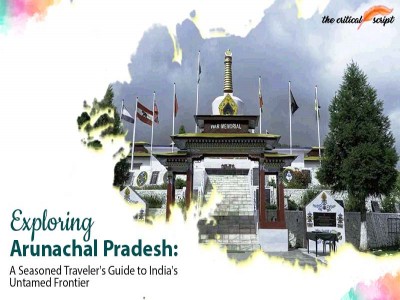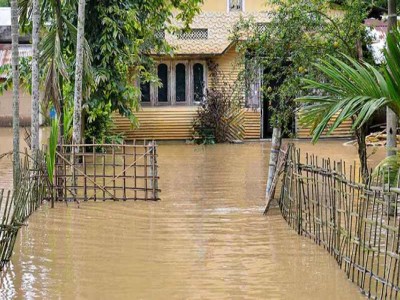
Nomination for Assam’s Charaideo Maidam comes after years of perseverance
Every year, UNESCO accepts only one nomination from each of its member nations to be included in the final or permanent list of World Heritage Sites. It is the year 2023, when Assam’s Charaideo Maidam of the Ahom Kingdom finally gets nominated by the central Govt. to be recognized as a World Heritage Site. The Assam Chief Minister Himanta Biswa Sarma made the announcement last Saturday on January 21, after writing to Prime Minister Modi, seeking the centre’s support in declaring the Charaideo Maidam as a World Heritage Site. The selection was made out of a tentative list of 52 sites across the nation.
Significance of the Charaideo Maidam
Often compared to the pyramids of Egypt, Assam’s Charaideo Maidam contains the burial remains of the royal Ahom dynasty. Located at the foothills of Nagaland, Charaideo is located 30 kms away from Sibsagar, and happens to be the first capital of the Ahom Kingdom, as established by the first Tai Ahom King Chaolung Siukapha during his reign from 1228 to 1256. Despite several shifting of the Ahom capital over time, Charaideo is acknowledged as the symbolic centre of the Ahom dynasty, whose rule extended for a glorious 600 years in the region.
The maidams in Charaideo are dome-shaped structures constructed with massive underground vaults, covered by heaps of earthen mounds. This was the preferred location for the Ahoms to bury the members of the royal families, including the first Ahom King Sukapha, who was laid to rest here. The maidams also consist of the burial remains of the wives, attendants, pet animals and a significant chunk of valuables belonging to the departed kings. It is important to note that, prior to the Ahom dynasty adapting to the Hindu way of cremation, the Ahoms adhered to burying the remains of the departed during the ancient age.
Apart from serving as the burial ground of the Ahom royalty, Charaideo Maidam is also revered as a sacred site dedicated to the ancestral Gods of the Ahoms.
Conservation Efforts
Of the 150+ maidams in the area, only 30 maidam are currently under the protection of the Archeological Survey of India and Assam State Archeology Department. The site is spread over 500 bighas of land, and is currently deprived of proper conservation efforts. As per a report dating back to 2015, the excavation carried out by ASI in 2002 to recover the remains from Maidam No 2 had been left exposed and vulnerable ever since.
The descendants of the Ahom royal family along with members of the Ahom Royal Society have expressed their displeasure over ASI’s negligence and issued warning to them from carrying out any further excavation.
Much of the unprotected and exposed maidams have become a subject of human encroachment as well as robbers over time, further contributing to the slow decay of the site. The call for attributing the world heritage tag to the revered site in Assam saw a tiny ray of hope in 2015, when it got shortlisted on the tentative list of 45 Indian monuments for the 2016 World Heritage Site tag.
Seven years later, the ray of hope is reignited as the Chairdeo Maidam finally makes its way to the nomination list of UNESCO list of World Heritage Sites. A team from UNESCO will make a visit in September this year to carefully examine the land, after which it is anticipated to be declared as a World Heritage Site.
It has been a slow but persistent milestone unlocked by the Assam Government. Especially since the actual process of wrapping up the selection from the tentative to the actual list takes a minimum of three years time.
Beyond Physical Conservation
Once the Charaideo Maidam is declared by UNESCO as a World Heritage Site, it will receive protection and legal rights for its conservation. The preservation of the site will also boost the tourism potential of the state, and unlock more avenues to strengthen the tourism infrastructure in the state.
However, the Govt. of Assam should not limit its effort toward only physically conserving the site. In today’s era of disruptive innovations, tools like augmented virtual reality and AI can prove to be immensely useful in a state’s preservation of its historical artefacts.
A recent press release reveals that the UNESCO World Heritage Site of Ancient Nalanda University in Bihar may soon be able to get an immersive experience of the grandeur of the historical institution, as the Culture Ministry is working on an augmented virtual-reality project.
Digital reconstruction of historical sites such as the ancient ruins of Nalanda, as well as the famed Charaideo Maidam of Assam can immensely benefit a state's tourism potential, while preserving the historical significance of the region both physically and digitally. Therefore, while we celebrate the success of Charaideo Maidam in being nominated for the UNESCO World Heritage Site, focus should also be on the digital reconstruction of the historical site.
Disclaimer: The opinions expressed in this article are those of the author's. They do not purport to reflect the opinions or views of The Critical Script or its editor.

Newsletter!!!
Subscribe to our weekly Newsletter and stay tuned.

















Related Comments